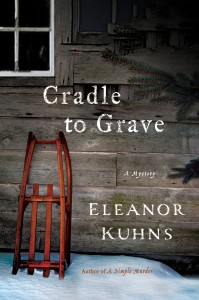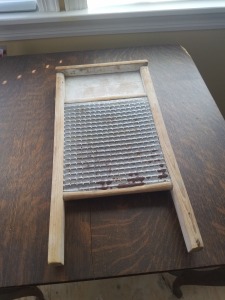The new Will Rees, number 6, will be released Feb. 1. The reviews are beginning to come in and they are good.
So happy!
As a librarian, I know that libraries, with their limited budgets, purchase primarily books with good reviews and starred reviews are even better.
Here is the review from Publishers Weekly:
Authentic period detail and nuanced characterizations lift Kuhns’s fine sixth whodunit set in late-18th-century Maine. In 2016’s The Devil’s Cold Dish, weaver Will Rees and his family suffered a series of calamities, which included his being accused of murder and their being forced to sell their home. Now they hope for a respite from turmoil and violence by joining the Shakers, but that proves short-lived after the body of one of the Shakers is found in a bathtub. To Will, the signs of intentional violence—a bloody wound on the dead man’s head—are clear, but the Shaker leadership insists that the death was accidental and refuses to call in outside authorities. After Will finds the murder weapon, a poker with traces of blood and hair on it, the church elders, knowing of his experience as an investigator, allow him to look into newcomers to the community as possible suspects. The stakes rise when another body turns up, this one even more clearly the product of foul play. Kuhns makes the most of the cloistered Shaker community setting in this top-notch outing. (Feb.)
And from two library journals:
Booklist
The Shaker Murders. By Eleanor Kuhns. Feb. 2019. 224p. Severn, $28.99 (9780727888372); e-book (9781448301720)
Weaver Will Rees seeks sanctuary for his family after fleeing his home and charges of murder against him, and witchcraft against his wife, Lydia, as described in The Devil’s Cold Dish(2016). What could be safer for his heavily pregnant wife and their five adopted children than the Maine Shaker community of Zion? But the day after Rees arrives at Zion, one of the brethren is found murdered. Within days, a teenager and an elderly woman also are killed, and attempts are made on the lives of the murdered woman’s husband and finally on Will himself. Shaker elders want to believe the killer is a visitor and not one of their own, while Rees is doubtful. Reasoning that subsequent crimes are attempts to cover up the original murder, he is faced with solving the killings as a means of ensuring his family’s future safety. This sixth Will Rees entry illuminates post-Revolutionary Shaker life, providing backstory that gives Rees nightmares, as it hints at the future for the family in this readable historical-mystery series.
And Kirkus
A traveling weaver and crime solver finds danger in a Shaker village.
It’s 1796. Will Rees has taken refuge in the community of Zion, Maine, after being forced to flee from his farm in Dugard, where he’d been accused of murder and his wife, Lydia, of witchcraft. Although he proved himself innocent (The Devil’s Cold Dish, 2016), his wife is still in danger. So he’s given his farm to his eldest son and taken a heavily pregnant Lydia and their six children to Zion. Even though they haven’t signed the Covenant, they must live as celibate Shakers. Rees shares his quarters not with Lydia but with Jabez, whose body is soon found drowned in a laundry tub. Rees knows Jabez’s death was no accident as soon as he sees the bloody wound on his head. When elders Solomon and Jonathan finally agree to let Rees ask questions, they express the hope the killer was an outsider. Rees is sure it is one of the brethren and is worried for the safety of his family. But he hasn’t told Lydia that he’s given their home away because it’s unsafe for her to return. The next to die is mentally challenged young Calvin, who may have seen the killer while sneaking out at night to visit the horses. Rees has a hard time controlling his temper while questioning the brethren because he knows they’re hiding secrets from him. When he finally admits to Lydia that they have no home, she reminds him that she inherited a farm nearby that the Shakers think should belong to the community. Desperate to find the killer and a home for his family, Rees resolves to follow every clue, especially when a young girl vanishes from Zion. Is she another victim of a ruthless killer?
An absorbing look at the early Shaker communities, whose very lifestyle set them up for eventual failure, through the eyes of an imperfect man doing his best for his family.
The only journal remaining is Library Journal. I hope that review is as good.






